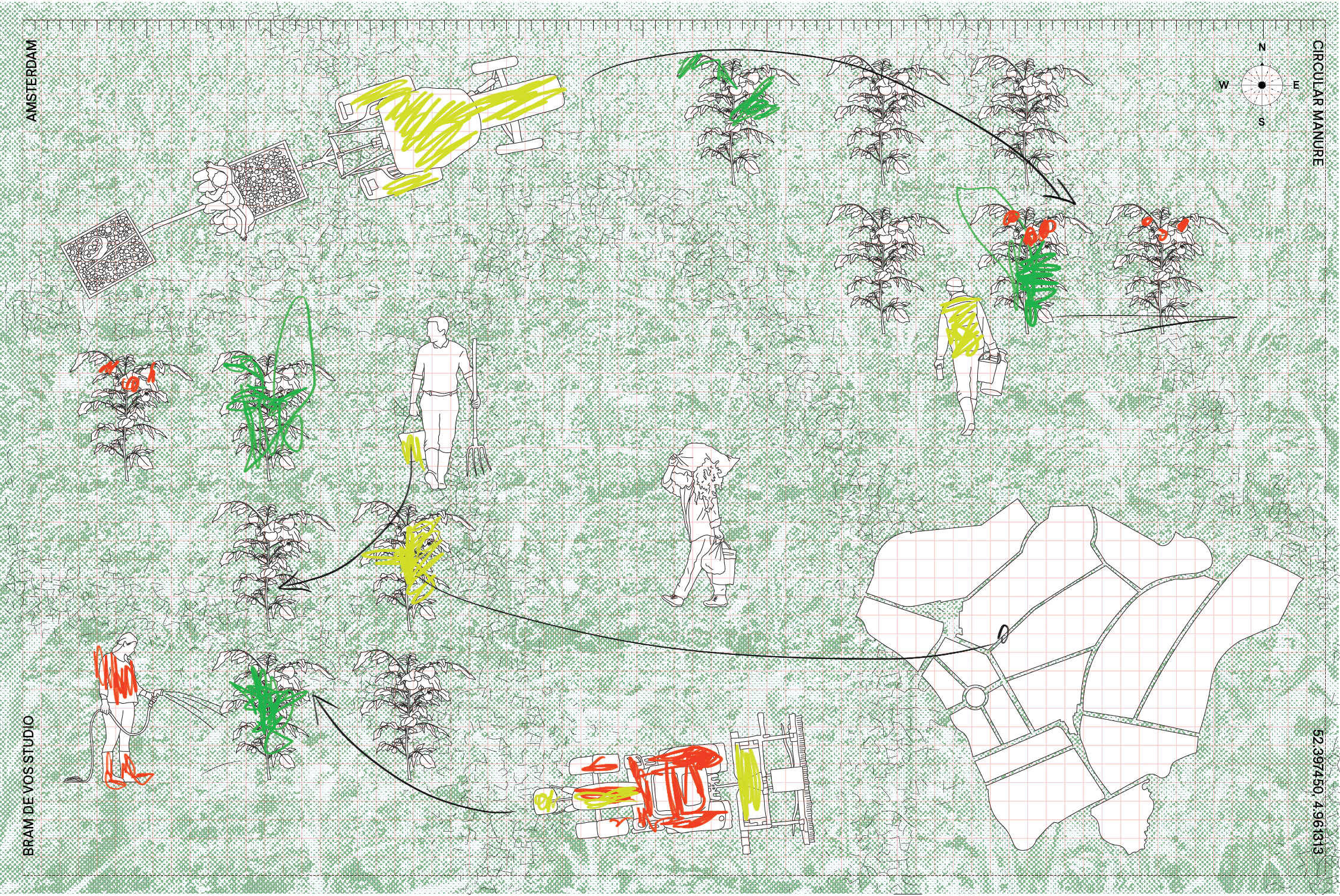07. CIRCULAR MANURE
 [Fig.1] Cover image
[Fig.1] Cover imageINITIATED– 2020
• circular compost & sewer systems
• local food chain
• circular agriculture
• local food chain
• circular agriculture
If you take, you got to give. To keep the agricultural soil healthy compost is needed. What if the city could provide for that?
Human manure could close the complete circular nutrient loop in Amsterdam. A relationship where the land provides food for the cities and the citizens provide the compost needed to grow the food. In 02. Uprooting Agro-Systems, Bram explores a reality where newly developed neighborhoods in the Waterland, Amsterdam-Noord, are equipped with a decentralized sewer system that collects human manure to turn into valuable compost that is brought to the surrounding farms. Yet another step closer to self-sufficiency.
If we focus on the amount of new households to be constructed in the model of 02. Uprooting Agro-Systems. We look at 25892 households to be built in the coming 15+ years. That’s around 57000 new citizens. That means a 22,03% increase compared to all the new residences to be built in Amsterdam. With a new type of sewer system, we could collect 71 tonnes of manure per year. A compost that could directly be used for the redesigned Waterland.
If we talk about compost and self-sufficiency, we would have enough manure for the Waterland, only if we use a different variety in alternative agricultural systems. A slight bit of compost is needed for the start of planting a food forest or a syntropic farming. Over the years these agricultural systems will generate their own compost needed. A vertical farm would be the only system that needs a consistent amount of fertilizer.
Human manure could close the complete circular nutrient loop in Amsterdam. A relationship where the land provides food for the cities and the citizens provide the compost needed to grow the food. In 02. Uprooting Agro-Systems, Bram explores a reality where newly developed neighborhoods in the Waterland, Amsterdam-Noord, are equipped with a decentralized sewer system that collects human manure to turn into valuable compost that is brought to the surrounding farms. Yet another step closer to self-sufficiency.
If we focus on the amount of new households to be constructed in the model of 02. Uprooting Agro-Systems. We look at 25892 households to be built in the coming 15+ years. That’s around 57000 new citizens. That means a 22,03% increase compared to all the new residences to be built in Amsterdam. With a new type of sewer system, we could collect 71 tonnes of manure per year. A compost that could directly be used for the redesigned Waterland.
If we talk about compost and self-sufficiency, we would have enough manure for the Waterland, only if we use a different variety in alternative agricultural systems. A slight bit of compost is needed for the start of planting a food forest or a syntropic farming. Over the years these agricultural systems will generate their own compost needed. A vertical farm would be the only system that needs a consistent amount of fertilizer.